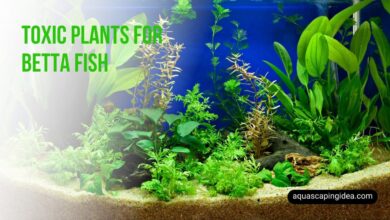How to Get Crystal Clear Aquarium Water?
Aquarium enthusiasts often dream of having a tank with water so clear it seems almost invisible. Crystal clear aquarium water not only enhances the visual appeal of your underwater world but also indicates a healthy environment for your aquatic pets. However, achieving and maintaining this level of clarity can be challenging, especially for beginners. In this comprehensive guide, we’ll dive deep into the art and science of keeping your aquarium water crystal clear, exploring everything from basic maintenance to advanced techniques.
Understanding the Importance of Clear Aquarium Water
Before we delve into the how-to, it’s crucial to understand why clear water matters. Crystal clear aquarium water is more than just aesthetically pleasing; it’s a sign of a well-balanced and healthy aquatic ecosystem. Cloudy or discolored water can indicate various problems, including:
- Poor water quality
- Excess nutrients
- Bacterial blooms
- Inadequate filtration
- Overfeeding
- Decaying organic matter
Each of these issues can stress your fish and other aquatic life, potentially leading to health problems or even death. By maintaining clear water, you’re not just creating a beautiful display; you’re ensuring the well-being of your aquatic pets.
The Science Behind Clear Aquarium Water
To effectively maintain crystal clear water, it’s essential to understand the basic science behind aquarium water quality. Aquarium water clarity is influenced by several factors:
1. Nitrogen Cycle
The nitrogen cycle is the backbone of aquarium health. It involves the conversion of toxic ammonia (produced by fish waste and decaying organic matter) into less harmful nitrites and then into nitrates. This process is carried out by beneficial bacteria in your aquarium.
2. pH Balance
The pH level of your aquarium water affects the health of your fish and the efficiency of beneficial bacteria. Most freshwater aquariums should maintain a pH between 6.8 and 7.8.
3. Water Hardness
Water hardness, measured in terms of dissolved minerals (primarily calcium and magnesium), can affect water clarity and fish health.
4. Temperature
Proper water temperature is crucial for fish health and can influence the growth of algae and bacteria.
Understanding these factors will help you make informed decisions when troubleshooting and maintaining your aquarium.
Essential Steps to Achieve Crystal Clear Aquarium Water
Now that we’ve covered the basics, let’s explore the key steps to achieve and maintain crystal clear aquarium water:
1. Proper Filtration
A high-quality filtration system is the cornerstone of clear aquarium water. Your filter should provide three types of filtration:
- Mechanical filtration: Removes physical debris
- Chemical filtration: Removes dissolved impurities
- Biological filtration: Supports beneficial bacteria growth
Choosing the Right Filter
When selecting a filter, consider the following factors:
- Tank size: Choose a filter rated for your tank volume or slightly larger
- Flow rate: Aim for a filter that can process your entire tank volume 4-6 times per hour
- Filter media: Ensure your filter can accommodate various types of filter media
Maintaining Your Filter
Regular filter maintenance is crucial:
- Clean or replace mechanical filter media weekly
- Replace chemical media (like activated carbon) monthly
- Avoid cleaning biological media with tap water; use tank water instead
2. Regular Water Changes
Consistent water changes are essential for maintaining water clarity and quality. Here’s a guide to effective water changes:
Frequency and Volume
- For most aquariums, change 10-20% of the water weekly
- For heavily stocked tanks, you may need to change water more frequently
Water Change Procedure
- Use a gravel vacuum to remove debris from the substrate
- Siphon water into a bucket, being careful not to disturb the substrate too much
- Treat new water with a dechlorinator before adding it to the tank
- Match the temperature of the new water to the tank water
- Slowly add the new water to avoid shocking fish
3. Proper Feeding Habits
Overfeeding is a common cause of cloudy water. Follow these guidelines for proper feeding:
- Feed small amounts 2-3 times daily rather than one large feeding
- Only feed what your fish can consume in 2-3 minutes
- Remove uneaten food after feeding
- Consider fasting your fish one day per week to allow their digestive systems to clear
4. Maintaining Proper Chemical Balance
Regular testing and maintenance of water parameters are crucial for clear water:
Essential Water Parameters to Monitor
| Parameter | Ideal Range (Freshwater) | Testing Frequency |
|---|---|---|
| Ammonia | 0 ppm | Weekly |
| Nitrite | 0 ppm | Weekly |
| Nitrate | <20 ppm | Bi-weekly |
| pH | 6.8-7.8 | Weekly |
| KH | 4-8 dKH | Monthly |
| GH | 4-8 dGH | Monthly |
Adjusting Water Parameters
- Use pH buffers to stabilize pH levels
- Add calcium and magnesium supplements to increase water hardness
- Use reverse osmosis water to decrease hardness if necessary
5. Proper Lighting
While not directly related to water clarity, proper lighting can prevent algae growth and enhance the overall appearance of your aquarium:
- Use LED lights with adjustable intensity and spectrum
- Maintain a consistent lighting schedule (8-10 hours per day)
- Consider a siesta period (turning lights off for a few hours midday) to reduce algae growth
6. Algae Control
Algae can significantly impact water clarity. Here are some strategies for algae control:
- Limit light exposure
- Maintain proper nutrient levels
- Introduce algae-eating fish or invertebrates
- Use algae scrubbers or UV sterilizers for stubborn cases
7. Substrate Maintenance
Your aquarium substrate can harbor debris and contribute to water cloudiness. Regular maintenance includes:
- Vacuuming the substrate during water changes
- Avoiding over-disturbance of the substrate
- Choosing an appropriate substrate for your aquarium type
8. Adding Beneficial Bacteria
Beneficial bacteria are crucial for maintaining the nitrogen cycle and clear water. Consider these methods:
- Use commercial bacterial supplements
- Add filter media from an established tank
- Introduce live plants, which harbor beneficial bacteria
9. Using Water Clarifiers
In some cases, you may need to use water clarifiers:
- Flocculants: These products clump fine particles together, making them easier for your filter to remove
- Activated carbon: This chemical filtration media absorbs dissolved organics that can cause water discoloration
Use these products sparingly and according to manufacturer instructions, as overuse can harm beneficial bacteria.
Advanced Techniques for Crystal Clear Water
For those seeking the absolute clearest water possible, consider these advanced techniques:
1. Protein Skimmers
While more common in saltwater aquariums, protein skimmers can be beneficial in heavily stocked freshwater tanks. They remove dissolved organic compounds before they can break down and cloud the water.
2. Reverse Osmosis Systems
Using reverse osmosis (RO) water can provide the purest base for your aquarium. RO systems remove almost all impurities from water, allowing you to precisely control water parameters.
3. Polishing Filters
These fine mechanical filters can remove extremely small particles from your water, providing that extra level of clarity.
4. UV Sterilizers
UV sterilizers use ultraviolet light to kill free-floating algae and harmful bacteria, helping to maintain water clarity and reduce the risk of disease.
Troubleshooting Common Water Clarity Issues
Even with the best maintenance, you may occasionally encounter water clarity issues. Here’s how to address common problems:
1. Green Water
Cause: Suspended algae bloom Solution: Reduce lighting, perform water changes, use a UV sterilizer
2. Cloudy White Water
Cause: Bacterial bloom or fine particulate matter Solution: Improve filtration, perform water changes, add beneficial bacteria
3. Yellow or Tea-Colored Water
Cause: Tannins from driftwood or leaves Solution: Use activated carbon, perform water changes, remove tannin-leaching materials
4. Milky Water After a Water Change
Cause: Dissolved gases or minerals from tap water Solution: Let water sit before adding to the tank, use a water conditioner
FAQ: Crystal Clear Aquarium Water
Q1: How long does it take to achieve crystal clear aquarium water? A1: With proper maintenance, you can see significant improvements in water clarity within 1-2 weeks. However, establishing a fully balanced ecosystem may take 4-6 weeks or longer.
Q2: Can I use bottled water for my aquarium? A2: While bottled water is generally safe, it may lack essential minerals. Treat tap water with a good water conditioner for best results.
Q3: How often should I clean my aquarium decorations? A3: Clean decorations during water changes, typically every 2-4 weeks, using an algae pad or soft brush. Avoid using soap or chemicals.
Q4: Is it possible to have too much filtration? A4: While it’s rare, excessive water movement from strong filtration can stress some fish species. Ensure your filter is appropriate for your tank size and inhabitants.
Q5: Can live plants help maintain water clarity? A5: Yes, live plants can significantly improve water quality by absorbing excess nutrients and providing additional biological filtration.
Conclusion
Achieving and maintaining crystal clear aquarium water is both an art and a science. It requires a deep understanding of aquarium ecosystem dynamics, consistent maintenance practices, and sometimes a bit of troubleshooting. By following the comprehensive guide outlined in this article, you’ll be well on your way to creating a pristine underwater environment that’s not only visually stunning but also healthy for your aquatic pets.
Remember, the key to success lies in consistency and patience. Establish a regular maintenance routine, stay vigilant for any changes in water quality, and be prepared to adjust your approach as needed. With time and dedication, you’ll master the skills necessary to keep your aquarium water so clear it seems almost invisible, allowing the true beauty of your underwater world to shine through.


